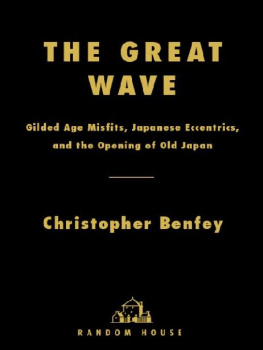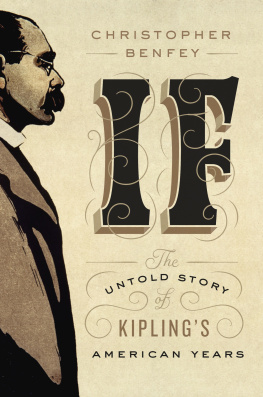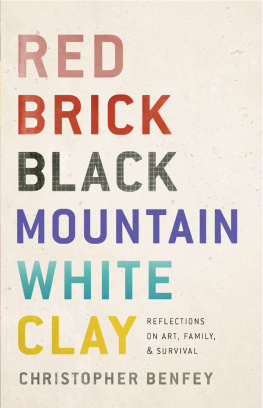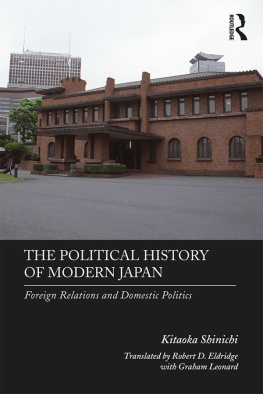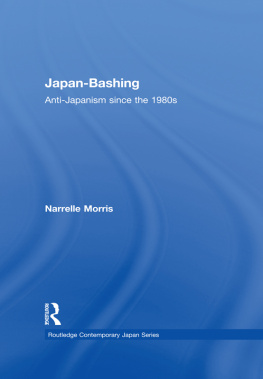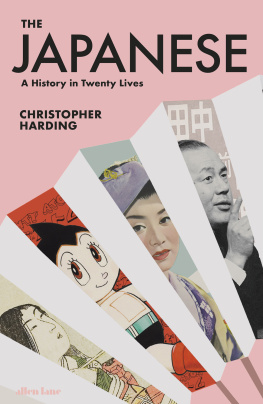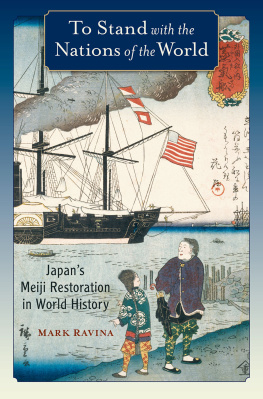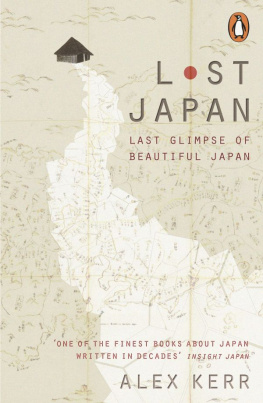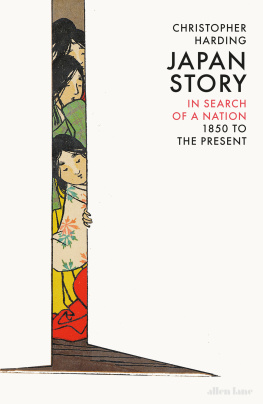Table of Contents
Praise for THE GREAT WAVE
The close-up brilliance of Christopher Benfeys depiction of the early stages of the encounter between sophisticated representatives of the American Gilded Age and those of nineteenth-century Japan required an assured grasp of both cultures, their assumptions and envies, their gifts and weaknesses, their humor and lack of it. He has portrayed this mutual loss of virginity with grace, wit, and a range of reference that re-echoes the original astonishments and is a pleasure to read.
W.S. Merwin
A fascinating account of the creative sparks that flew between Americans and Japanese in the Gilded Age and after.
The New York Review of Books
The Great Wave beautifully re-creates that distinctive fascination with Japan that so touched the hearts and minds of many on both sides of the Pacific.... [Benfey] shows us just what it was that so enchanted generations of the disenchanted and that continues to captivate successive generations of pilgrims to this very day.
Los Angeles Times Book Review
On nearly every page Mr. Benfey introduces an American intellectual, writer, or artist, or fact, or Japanese artifact, or incident that makes the reader smile in wonder at the web of connection.... The book is full of surprises. The Washington Times
Fascinating... This is one of those cultural histories that seems to expand, stitching together everything in a period until the reader gains a fundamentally different and deepened understanding of an entire age.... Through The Great Wave, we see that moment when America and Japan came to see themselves in each others eyes.
The Dallas Morning News
Thoughtful and imaginative... The fascination of Christopher Benfeys The Great Wave lies in discovering how arbitrary our notions about Japan are. Benfey makes us shiver at the rawness of early travelers experiences and makes us see the allure of an utterly alien civilization.
Newsday
The Great Wave is a beautifully rendered meditation on the subject of cultural identity and on the consequencesboth good and badof cultural cross-pollination. Above all, like Louis Menands The MetaphysicalClub, it proves that what important history does at its best is transform our worldview. Forbes
Consistently enjoyable and always informative.... [Benfey] seamlessly braids the far-flung adventures of cultural importers/exporters from both countries and offers an enjoyable collection of eclectic and surprising historical narratives.... The cultural exchanges that Benfey describes, at times comic, are tantalizing examples of how nations develop and in what ways they are able to learn from each other.
Publishers Weekly (starred review)
CHRISTOPHER BENFEY teaches literature at
Mount Holyoke College, where he is codirector of the
Weissman Center for Leadership. He writes for many
magazines, including The New Republic, The New York
Times Book Review, and Travel & Leisure, and for two
years he was the regular art reviewer for Slate. Benfey is
the author of Emily Dickinson and the Problem of Others,
The Double Life of Stephen Crane, and Degas in
New Orleans. He lives in Amherst, Massachusetts,
with his wife and two sons.
ALSO BY CHRISTOPHER BENFEY
DEGAS IN NEW ORLEANS
THE DOUBLE LIFE OF STEPHEN CRANE
EMILY DICKINSON AND THE PROBLEM OF OTHERS
To my brother Stephen and to Mickey, Tommy, and Nicholas
INTRODUCTION
THE MAP

Toward the end of the nineteenth century, and especially during the quarter century that followed the Centennial of 1876, there was a tremendous vogue in the United States for all things JapaneseJapanese prints and porcelain, judo and Buddhism, geisha and samurai. In retrospect, this great wave of interest seems both unlikely and inevitable. Unlikely, because for most of the nineteenth century Japan was a tiny and backward country, a spray of inconsequential dots on the map of the Pacific. Inevitable, because once the westward expansion of the United States, all but complete by the end of the century, arrived at the Pacific Ocean, the idea of a new frontier even farther west was in the airor water. The same waves wash... the new-built Californian towns, but yesterday planted by the recentest race of men, and lave the faded but still gorgeous skirts of Asiatic lands, older than Abraham, wrote Herman Melville, while all between float milky-ways of coral isles, and low-lying, endless, unknown Archipelagoes, and impenetrable Japans.
No region of the United States was more enamored of Japan than New England. This affinity, too, was perhaps to be expected. Through its great ports of Salem and Boston, Nantucket and New Bedford, New England had sent merchant ships and whaling ships into Asian waterspast Java and Japan, and on to Shanghai and Calcuttasince the late eighteenth century. Occasionally a ship from New England foundered off the xenophobic shores of Japan, which had been closed to foreigners since the Shoguns declaration in 1639 that Christians and other outside barbarians were a menace to Japan. And sometimes an American ship rescued a Japanese fisherman adrift in the wide expanses of the Pacific. After voyages that could last for years, sea captains returned with exotic curiositiesfans and furnishings, swords and screens, seashells and bambooto adorn their mantelpieces and, later, to fill the museums of New England. It was no accident that the tax revolt known as the Boston Tea Partywhen casks of Asian tea were tossed unceremoniously into the harbortook place in Boston, the heart of the Asia trade.
Even as its power as a financial and trading center was eclipsed by New York after the Civil War, Boston insisted on its rolereaching back to the Puritan divines, and renewed during the age of Emersonas spiritual guide to the nation. Emerson and his disciple Henry Thoreau had looked to the Asian religions of Hinduism and Buddhism for sustenance as early as the 1840s. That interest in Asian spiritual practices increased as Protestant fervor waned. The Reverend Phillips Brooks, imposing rector of Bostons Trinity Church, visited in 1883 the great Indian temple of Buddha-gayawhere the Buddha is said to have reached enlightenment after six years of sitting under a bo-tree. In these days, when a large part of Boston prefers to consider itself Buddhist rather than Christian, Brooks wrote, I consider this pilgrimage to be the duty of a minister who preaches to Bostonians, and so this morning before sunrise we started for Gaya and the red Barabar Hills.
The large part of Boston that considered itself Buddhist was not, of course, the Irish workers. Brooks meant the Protestant elitethose old Boston families who might be counted on to attend Trinity on any Sunday. It was among the artists and intellectuals of this congregationthe Lodges and the Adamses, the Bigelows and Brooksesthat Buddhism had its hold, and Phillips Brooks was hardly the only Boston Brahmin who made the pilgrimage to the East. Deeply disaffected by the vulgarity and superficiality of American culture during the decades immediately following the Civil War, these self-styled young aristocrats looked elsewhere for a social order more attuned to their temperament. The historian Richard Hofstadter has succinctly described their disillusionment:

